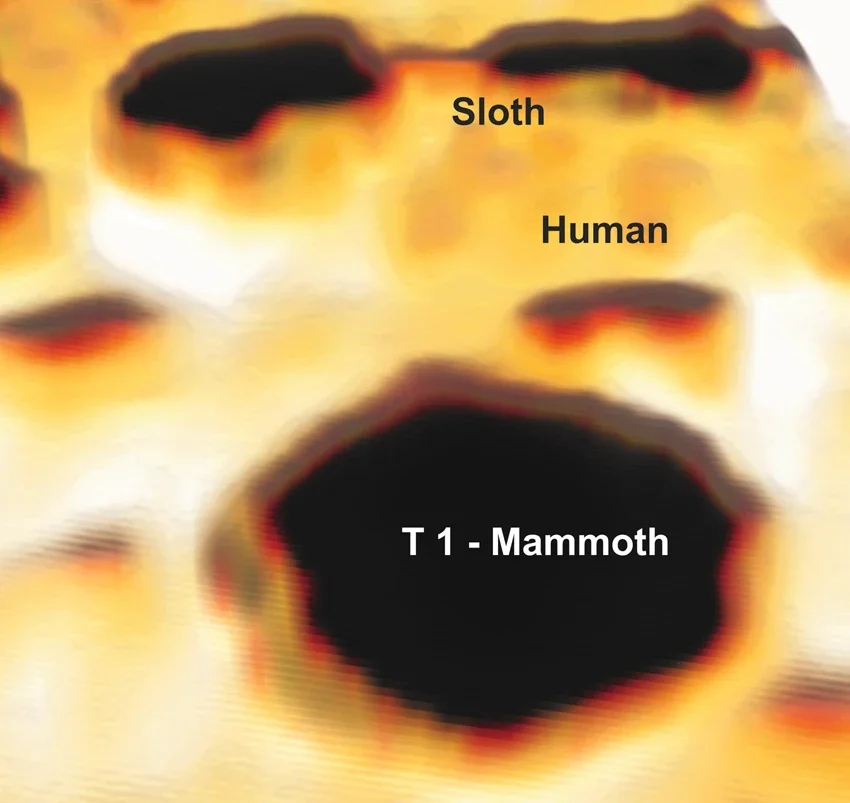Subtle Ancient Footprints Come to Light
By Eliene Augenbraun on November 29, 2019

Three-dimensional ground-penetrating radar (GPR) perspective of mammoth track, along with human and sloth tracks. The presence of sloth tracks was not known prior to the GPR survey and was later confirmed. Credit: Scientific Reports
Ground-penetrating radar can detect tiny density differences that lead to images of ancient footprints impossible to discern by eye.
Full Transcript
Fossil footprints help tell us how ancient people lived. But such physical impressions are hard to find.
“You get all of these footprints from different species in the same time period interacting, and you can’t see them all the time. And some of them, you can never see—with the eye, that is. But we can we can still detect them with geophysical sensors.”
Cornell University archaeologist Thomas Urban. He and colleagues used ground-penetrating radar (GPR) to detect invisible traces of footsteps in White Sands National Monument in New Mexico. Their GPR device goes back and forth over an area in a grid pattern, which ultimately creates a 2-D radargram. The technique detects subtle differences in ground density.
More:
https://www.scientificamerican.com/podcast/episode/subtle-ancient-footprints-come-to-light/?utm_source=feedburner&utm_medium=feed&utm_campaign=Feed%3A+sciam%2Fevolution+%28Topic%3A+Evolution%29
